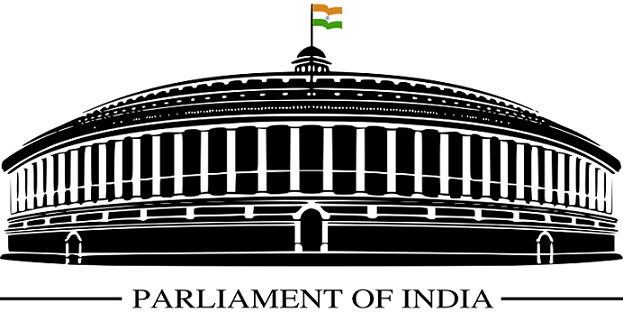The Madisonian model of the structure of government named after one of the American founding fathers, James Madison, “the Father of the Constitution”, is the structure that separates government into three branches namely, executive, legislature, and judiciary. This model separating powers between the branches of the government came into being in Philadelphia in 1787 during the Constitution Convention of America. The model has proven to be so successful and influential that it has been copied in various avatars in democracies around the world while the U.S. constitution itself has survived and flourished for more than 230 years now.
When the delegates to the Constitution Convention in America were debating what should be the form of government for the newborn United States, their foremost concern was to not go in the footsteps of the British system of governance. The Americans had only recently won the Revolutionary War (also known as the American War of Independence) from Britain and abhorred the British monarch and parliament. Foremost in their mind was the establishment of checks and balances between different branches of the government so that the emergence of an authoritarian (like the British monarch) could be forestalled. The separation of power between an executive directly elected by the citizens to choose a president and legislature separately elected by them based on local issues served well for the United States. In this scheme of things, the judiciary acted as another check on the above two branches of government should either misuse its power.
When the Indian founding fathers were debating in the Constituent Assembly about the form of government for Independent India, not much consideration was given to the American presidential system. This is not because the founders were unaware of the American system. Rather, many among the founding fathers were eminent lawyers who knew a lot about various forms of government across the world. Additionally, that remarkable bureaucrat, B. N. Rau, was sent to tour various nations during the research in drafting the Indian Constitution when he was serving as the Constitutional Adviser to the Constituent Assembly. The Indian founding fathers, many of which had received their law education in Britain, adopted the British parliamentary form of government for India. This is due to a certain admiration for the British form of governance (in Britain) and the influence of the British liberal education that most of them had been trained in. Let us briefly summarize two demerits and two merits of this system in the Indian context.
The first thing to note about the British parliamentary system is that it is, well, British. The ingenuity with which the British have conceived a system in which the executive is formed by the members of the legislature is remarkable in the British comical sense. Alas, the formation of the executive by members of the legislature (as happens in India where the ministers have to be members of the parliament) means that the independence of the three branches of government is compromised right at the foundational level. Furthermore, this sadly ensures that the formation of the legislature during general elections is done on the basis of personalities much more than local issues. After all, people voted in 2014 and 2019 for the Bharatiya Janata Party (BJP) to make Narendra Modi the prime minister of India and not because of the performance of individual members of parliament. This means that the formation of the legislature gets subsumed by the people’s choice for the formation of the executive. In this sense, elections in India are usually presidential rather than parliamentary. How different the outcome would be if the elections of the legislature and the executive would be separate? In such a system, as in the American case, people would have voted in different elections based on varying kinds of issues. This would have further sensitized the people about their local issues.
Another fault in the Madisonian model that emerges from the above peculiarity is that the legislature or at least the lower house of the parliament (Lok Sabha) becomes a rubber stamp for the executive. Since the executive already enjoys a majority in the parliament (without majority the executive i.e. the government could not form in the first place), it becomes easier for the executive to sail through its policies in the legislature. The frequent deadlocks between the executive and the legislature that are a characteristic feature of the American government due to the not so uncommon presence of different parties dominating the executive and the legislature are wholly absent in India. Such deadlocks happen in India only when the political parties that are not in the executive branch comprises a sufficient majority in the upper house of the parliament (Rajya Sabha).
The first merit of this system is that in the multi-party democracy that India is, it is likely very hard for a single party to enjoy a majority in the legislature if the elections would be solely based on issues. The faces of the political leaders make the people gravitate toward (or repel from) various a particular political party in most elections. With a first-past-the-post voting system, this ensures that a political party can secure a majority in the legislature with a vote share as low as 30-35%. If separate elections to executive and legislature would happen in India, it is very likely that we will get a strong executive branch but a weak legislature because no party would be able to dominate the legislature. This in turn would lead to more frustration, deadlocks between the two branches of government, and perhaps the emergence of more authoritarian leaders.
The second merit of the Indian parliamentary system is that it has led to the emergence of mass leaders across the nation. This has helped in strengthening the federal structure of the Indian polity. For three decades after Independence, the Indian National Congress dominated the Indian political arena. However, as regional leaders started to gain presence, the formation of non-Congress governments strengthened the federal structure as envisioned by the founding fathers. Faces like Mamata Banerjee, Pinarayi Vijayan, Naveen Patnaik, Amarinder Singh, K. Chandrashekar Rao, Nitish Kumar, Y. S. Jaganmohan Reddy, etc. ensure today that even a general election becomes a sum of state elections for the two largest political parties that are forced to enter into alliances. The rise of strong state leaders ensures more accountability from the state governments and the flourishment of various regional diversities that cannot be subsumed by the national majority. It is because of this fact that every single state election in India becomes a center of focus for the whole nation while such elections in the U.S. generally go unnoticed.
Neither American nor Indian system of governance has complete separation of powers between the different branches of government. The American system lacks in this aspect since the appointment of justices to the Supreme Court is done by the president (executive) and is confirmed by the Senate (legislature). The independence of the judiciary is flawed in this sense since the justices of the supreme court are usually strictly divided by ideologies. Since this is not the case in India where a collegium system elevates justices to the Supreme Court, the top echelons of the Indian judiciary still enjoy people’s trust and integrity. It is because of this independence enjoyed by the judiciary that the Supreme Court has still not declined as an institution as much as various other institutions have because of the executive’s authoritarianism.
All of the above discussion is of course, academic. The Indian Constitution that our founding fathers have bestowed on us has kept this mind-bogglingly diverse nation together for seven decades now. It has matured for the needs of the nation. Changing India’s basic form of governance to a presidential one as advocated by many eminent scholars (and scholar-parliamentarian Shashi Tharoor) could only happen by a revolution. And, revolutions, as they go, are usually bloody. Thus, despite the demerits of the parliamentary form of governance in the Indian context, it is the best possible form of governance for India among all the ones that have been tested in the past seven decades.

 2020 Physics Nobel Laureate Roger Penrose and IIIT Allahabad
2020 Physics Nobel Laureate Roger Penrose and IIIT Allahabad